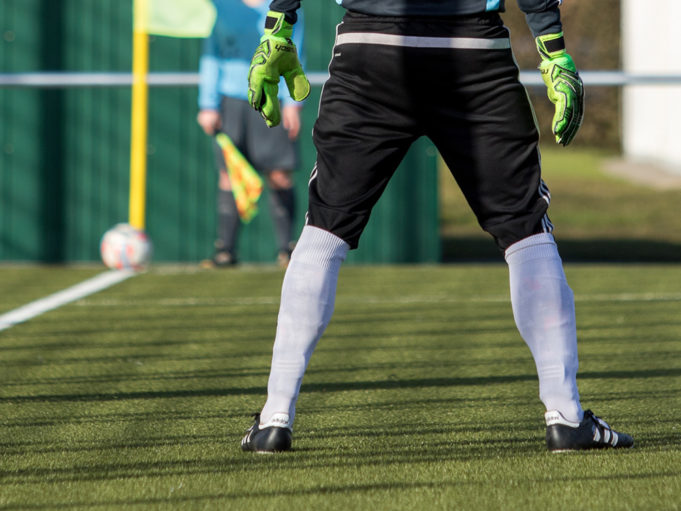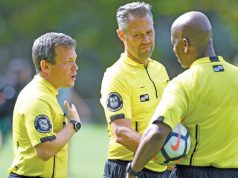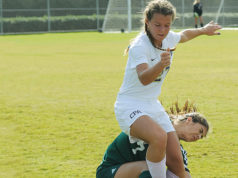By Carl Schwartz
As I’m getting older, I’m learning more and more. I really wish I had known this 30 years ago. If you see an incident in the penalty area and are undecided as to whether to blow the whistle or not, consider if the team with the ball has a 74 percent chance of scoring within the next three seconds.
You all know why the three seconds — it’s the standard for when you can still whistle the original infraction, bringing the ball “back” to the original foul and location. But why the 74 percent? That was the percentage of penalty kicks that were successfully converted during World Cup 2010. That is not a bad metric, unless you know in the particular league you are working skilled kickers are more or less successful against your corps of goalkeepers.
This is not USSF, NCAA or NFHS guidance. This is one official’s rule-of-thumb. I happen to like it. To my mind, it works. It’s easy to apply. It’s simple enough so that you can learn it in the two minutes it takes you to read this article.
A9 has the ball about 15 yards from goal. B4 clips his or her heel, A9 stumbles, regains his or her balance as the ball rolls two yards away and within two steps, A9 has a decent shot. To my mind, that’s a 74 percent chance of scoring. A9 might not make the goal (shot goes high, wide or into the goalkeeper’s chest), but he or she’s got a 74 chance, same as A9 would have from the penalty mark.
B8 and B10 are both coming down the left wing, inside the penalty area. B8, with the ball, is clearly tripped and the ball rolls to B10. With space to the nearside, B10 has a decent opportunity for a shot or a cross. If you can quickly determine that either the shot or the cross has a three-quarters chance of scoring, the rubric is that you allow play to continue and watch as team B tries to score during active play rather than from a penalty-kick restart.
A7 enters the penalty area from the penalty arc. There are four defenders plus the goalkeeper. B2 pushes A7, who becomes wrong footed and falls. There are no other team A players around and B4 clears the ball 45 yards downfield. There is a zero percent chance of scoring at that point, so whistle long and loud, while signaling to the penalty mark.
Violence
The one area where this advice falls apart is when you witness an act that is either serious foul play or violent conduct. In thousands of games of officiating, assessing and watching games at all levels, I’ve seen exactly two cases where red-card misconduct and advantage needed to be decided in the next two seconds. In one, advantage was given and the goal was scored. In the other, just as the shot was being taken, the whistle sounded and within a second the laser shot was bulging the back of the net.
With more than a hundred contact decisions to be made every game, having seen two instances in thousands of games, we are literally talking one-in-a-million. The better advice — stop play, display the red card and restart with a penalty kick. That small time window invites unwanted retaliation, which compounds your problems.
Carl P. Schwartz, Treasure Island, Fla., was a USSF and NISOA National Assessor, a State Instructor and refereed more than 3,800 games in the U.S., Germany and England.
What's Your Call? Leave a Comment:
Note: This article is archival in nature. Rules, interpretations, mechanics, philosophies and other information may or may not be correct for the current year.
This article is the copyright of ©Referee Enterprises, Inc., and may not be republished in whole or in part online, in print or in any capacity without expressed written permission from Referee. The article is made available for educational use by individuals.


















